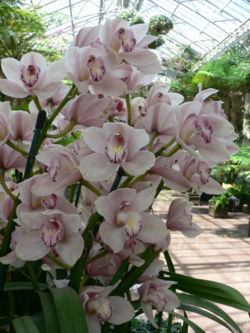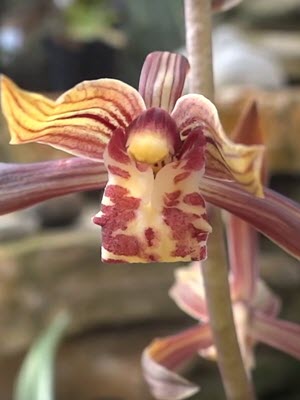Cymbidium Orchid Care
Contents
The Cymbidium orchids are not only kept as houseplants; they are popular garden flowers as well in regions where the climate is right for them. The genus Cymbidium was first described in 1799 by a Swedish botanist and taxonomist named Olof Swartz. By then, Cymbidium orchids had already been cultivated in Asia for over a millennium. In Europe, this orchid group became highly popular during the Victoria era and Cymbidium orchids are still commonly found in floral arrangements. The name Cymbidium comes from the Greek word kumbos which means ‘cavity’. Olof Swartz picked this name because of the form of the lip base in Cymbidium orchids.
The name Cymbidium comes from the Greek word kumbos which means ‘cavity’. Olof Swartz picked this name because of the form of the lip base in Cymbidium orchids.
There is currently over 50 different described species of Cymbidium orchids but only a small number is commercially grown since the floral trade prefers to use hybrids rather than original species. The wild Cymbidium orchids can be found in tropical and subtropical parts of Asia and northern Australia, particularly in higher elevations where the climate is cooler.
One of the great aspects of keeping a Cymbidium orchid is the fact that these orchids can bloom during the winter months. Provide your Cymbidium orchid with the right orchid care and you can have a flower that brings you much joy when most other indoor plats are resting.
The comes in several colours including the very popular Green cymbidium.
Orchid medium
Cymbidium orchids suffer when forced to stand “with their feet wet” in a soggy medium and using a well draining medium for your orchids is therefore very important if you want them to thrive. Fir bark mix for terrestrial orchids is recommended in mild summer climates, while a finer orchid mix can be used in warmer summer areas.
Temperature
As mentioned above, the Cymbidium orchids hail from tropical and subtropical regions, but they can actually survive even prolonged exposure to 45˚ F (7˚ C) since they are adapted to a life at higher elevations where the climate can be quite chilly even in the tropics. Cymbidium can survive temperature extremes that would kill most other tropical orchids. There are examples of well established Cymbidium orchids that have survived in gardens where the temperature occasionally drop down to 28˚ F (-2.2˚ C) for several hours during the very coldest winter nights. This is however not ideal and frost can cause serious damage even to this hardy little plant. Spikes and flowers should never be exposed to temperatures below 35˚ F (1.7˚ C). When it comes to heat the Cymbidium orchids can cope with fairly high day temperatures provided that the night temperature is considerably lower, ideally around 50-65˚ F (10-18˚ C).
Light
A Cymbidium orchid prefers to be placed in a spot where it will receive plenty of mild morning and afternoon sun while being shaded from the intense mid-day rays. A Cymbidium orchid with yellowing leaves is most likely being exposed to too intense sun light. Leaves that become much darker than normal is on the other hand a sign of to little light.
Cymbidium orchid care and watering
A lot of Cymbidium orchids fail to thrive since they are given too much och too little water. It is hard to provide any general recommendations since the ideal amount and frequency depends on factors such as air humidity and temperature in the room where you keep your Cymbidium. If you live in a temperate part of the world where the indoor air is fairly dry due to central heating, then watering your Cymbidium once a week or every 10th day is a good start. Keep a watchful eye over your orchid and be prepared to change the amount and frequency if necessary. A soggy medium is never recommended, but letting the orchid become too dry can also cause problems.
Nutrients
A prospective Cymbidium owner should ideally purchase two different types of fertilizers: high nitrogen (25-9-9) and low nitrogen (6-25-25). The low nitrogen fertilizer should be used from August to then end of January and the high nitrogen fertilizer during the rest of the year. For most brands one teaspoon of fertilizer per month will be ideal. To not force feed your Cymbidium orchid all the nutrients in one big serving per month, since this is a very unnatural way of obtaining nutrients for the orchid. Split the dose up into several different servings throughout the month and your orchid will be much happier.
Repotting Cymbidium orchids
Repot your Cymbidium orchid once very second or third year, ideally during the period when you are giving it high nitrogen fertilizer.
Cymbidium Species
Cymbidium orchid trivia!
One of the Cymbidium hybrids is named “Happy Barry Sailor Moon” after the popular Japanese anime heroine Sailor Moon. The colour of this orchid is identical to the hair colour of Sailor Moon.
In Other Languages: Cymbidium på Svenska
